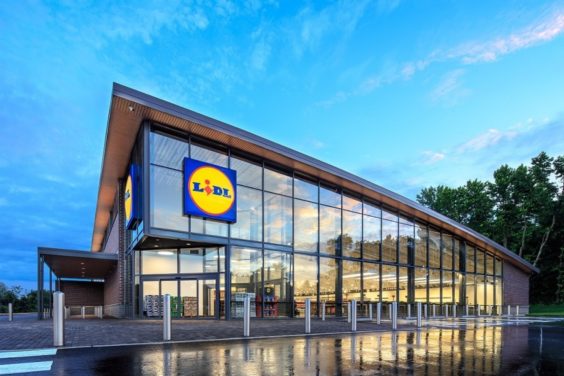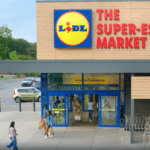
In an apparent unguarded moment speaking with colleagues, the CEO of Lidl’s parent company is quoted by the German business publication Manager Magazin as calling the retailer’s entry into the U.S. “a singular catastrophe”. In a formal interview for the magazine’s February edition, released today, Schwarz Gruppe CEO Klaus Gehrig is a bit more circumspect, acknowledging that “several things have gone wrong” and declaring “if you recognize a mistake, you have to correct it”.
Now, the magazine reports that Lidl will open just 20 more U.S. stores in the coming year, for a total of 68 – well short of its goal of opening 100 stores in its first year.
Some of Lidl’s American growing pains have been discussed here before. But Manager Magazin doesn’t pull any punches, calling the German retailer’s American debut a “botched expansion”, a “disaster”, a “fiasco” and a “debacle” – raising the prospect that Lidl might turn out to be more like a Fresh & Easy misfire, than the second coming of ALDI.
Lidl is a small-format grocer with more than 10,000 stores in 27 countries. It stocks mostly store-brand products and keeps the frills to a minimum, to help keep costs down. Its German doppelgänger ALDI crossed the Atlantic decades ago and has been opening more U.S. stores ever since. So a few years ago, Lidl decided it was time to do the same.
But it ran into some troubles from the get-go. Among the early problems cited by Manager Magazin, only one warehouse was operational at the time of the first store openings last summer. That meant trucks had to travel for hundreds of miles to stock far-flung stores. Some products were reportedly expired by the time they finally got where they were going, and some products advertised in the sales circular arrived only after the sales were over.
Meanwhile, the newly-built stores weren’t equipped with backup generators, leading to embarrassing situations where stores had to close when power was lost during summertime outages.
Those problems were quickly corrected. But the magazine raises some more serious long-term issues.
Site selection is one. In identifying places to build new stores, Lidl’s U.S. team didn’t do enough research into the neighborhoods it chose to serve, instead settling for any “plots that were currently available, as long as they were on a busy road,” the magazine reports. Their bosses in Germany “were usually content to look at locations on Google Maps” before okaying the choices.
Product assortment is another issue. Lidl’s American stores have had a hard time catering to Americans, who increasingly prefer ready-made meals, and may be wary of store-brand products from a store they’re unfamiliar with. Lidl U.S. CEO Brendan Proctor, previously CEO of Lidl’s Ireland division, “had no feel for the American market, which is significantly different from Europe,” Manager Magazin reports. Neither did members of his team – “average age in their mid-20’s”, the magazine points out.
Then there’s the style of Lidl’s American stores. With soaring glass windows and wide aisles, the stores may be too nice for their own good. “Lidl’s shopping temples simply did not exude a discounted feel, despite having unbeatable low prices,” the magazine reports.
Finally, there’s the matter of Lidl’s competition. In a recent report that was commissioned by Lidl, a University of North Carolina researcher found that Lidl has had a positive effect on grocery prices in U.S. markets it has entered so far. “On average, competing retailers near Lidl stores set their prices approximately 9.3% lower than in markets where Lidl is not present,” the report found. “This price reaction results, on average, in substantial dollar savings for customers.”
But that rosy conclusion apparently doesn’t tell the whole story. Manager Magazin sees Lidl’s impact on competitors’ prices as more of a problem than a virtue. Even before Lidl opened its doors in the U.S., many competitors preemptively lowered prices, blunting Lidl’s impact. As a result, when Lidl opened its first stores, “curious customers came in,” the magazine reports. “But the euphoria did not last long; Walmart and ALDI managed to get the clientele back.”
So is it too late to right this ship? Lidl is now looking to build smaller stores with a more modest design. It’s scaling back its expansion plans, walking away from as many as half of the 200 sites it had eyed for future stores. It’s modifying its product assortment, reducing rather than expanding its offerings. And it’s still keeping prices low, even as competitors do the same.
So if you have a Lidl near you, you may be able to enjoy lower grocery prices, even if you don’t shop at Lidl. But then if you don’t shop at Lidl, its impact on competitors’ prices – and its plans to expand across America – may not last for long.










